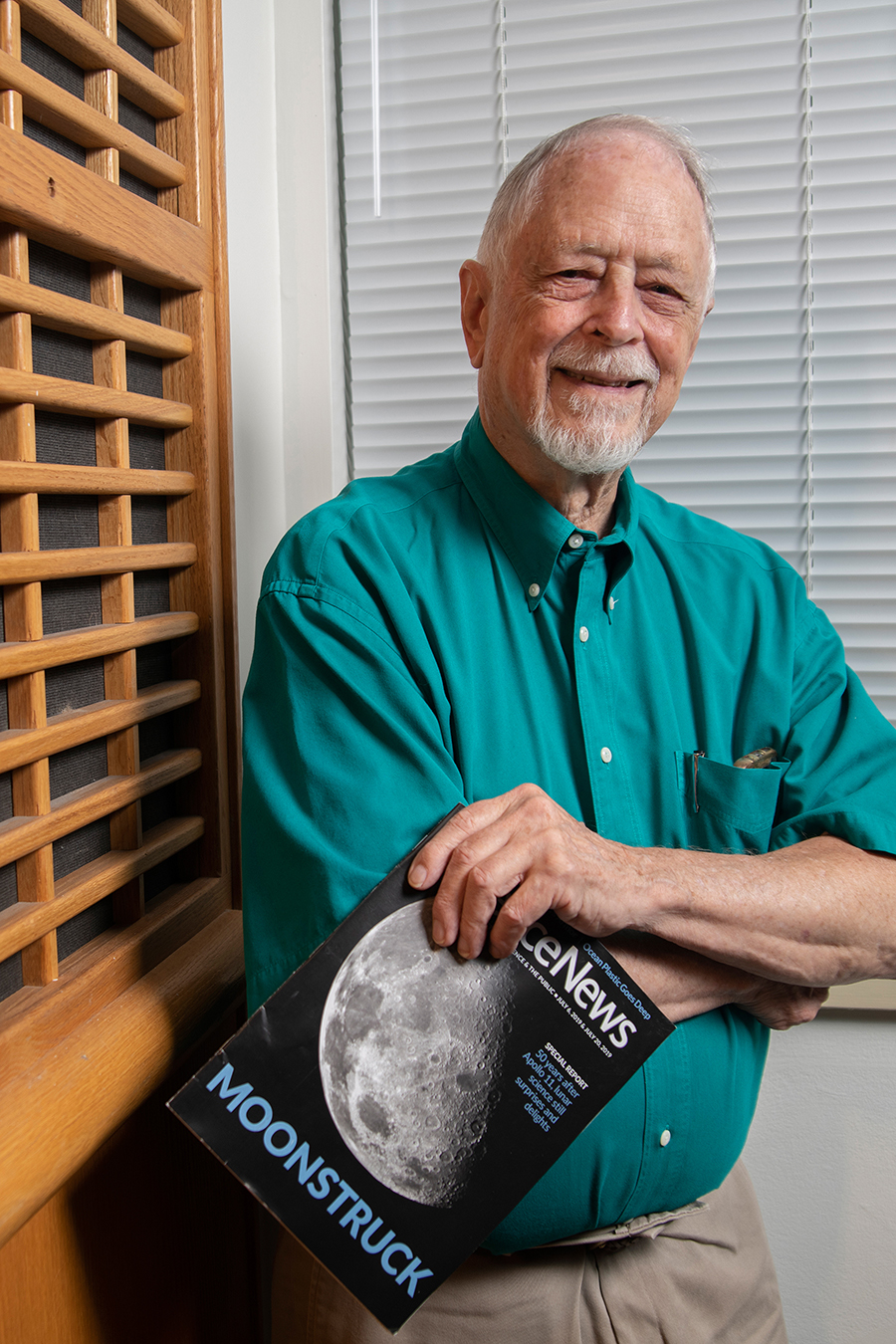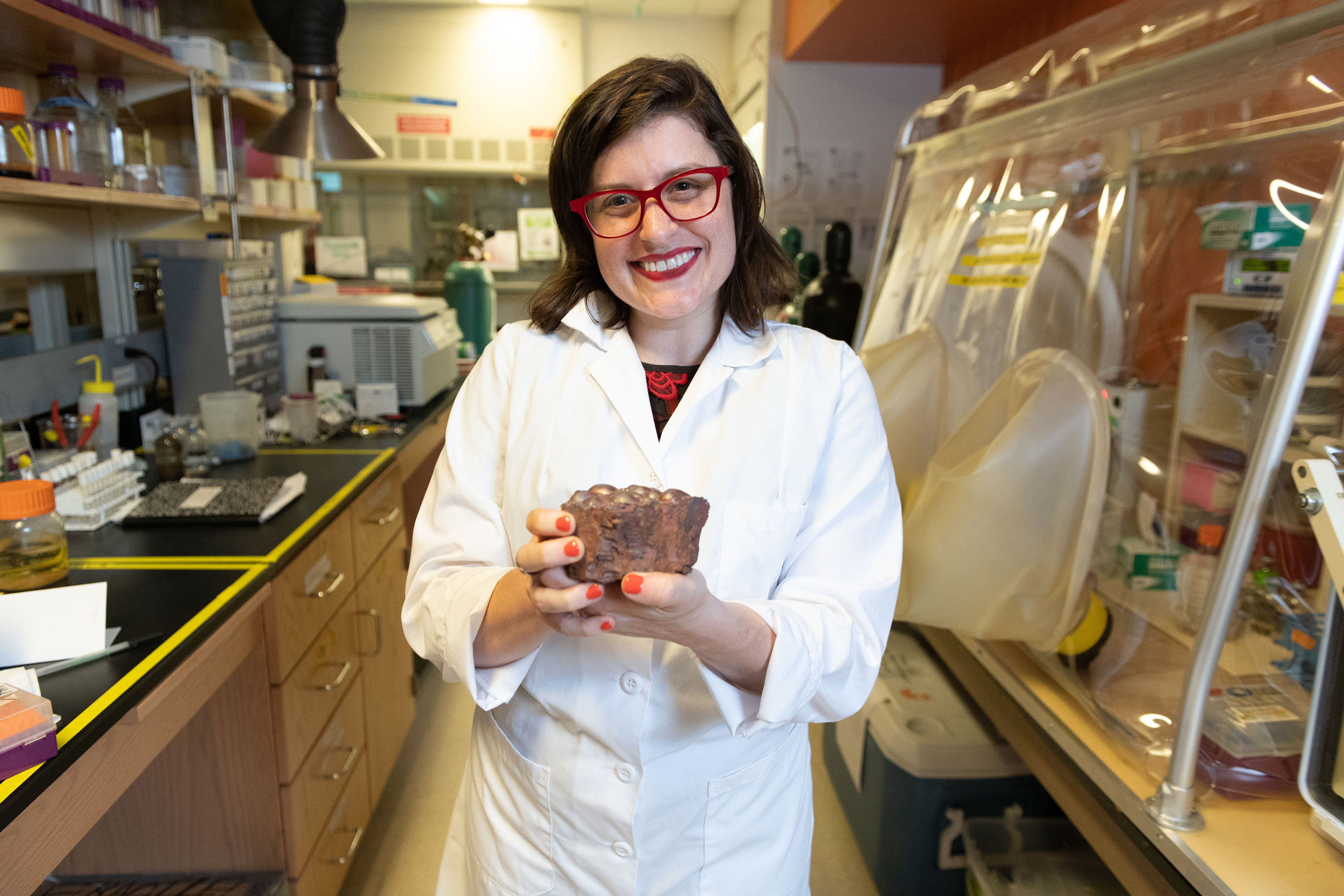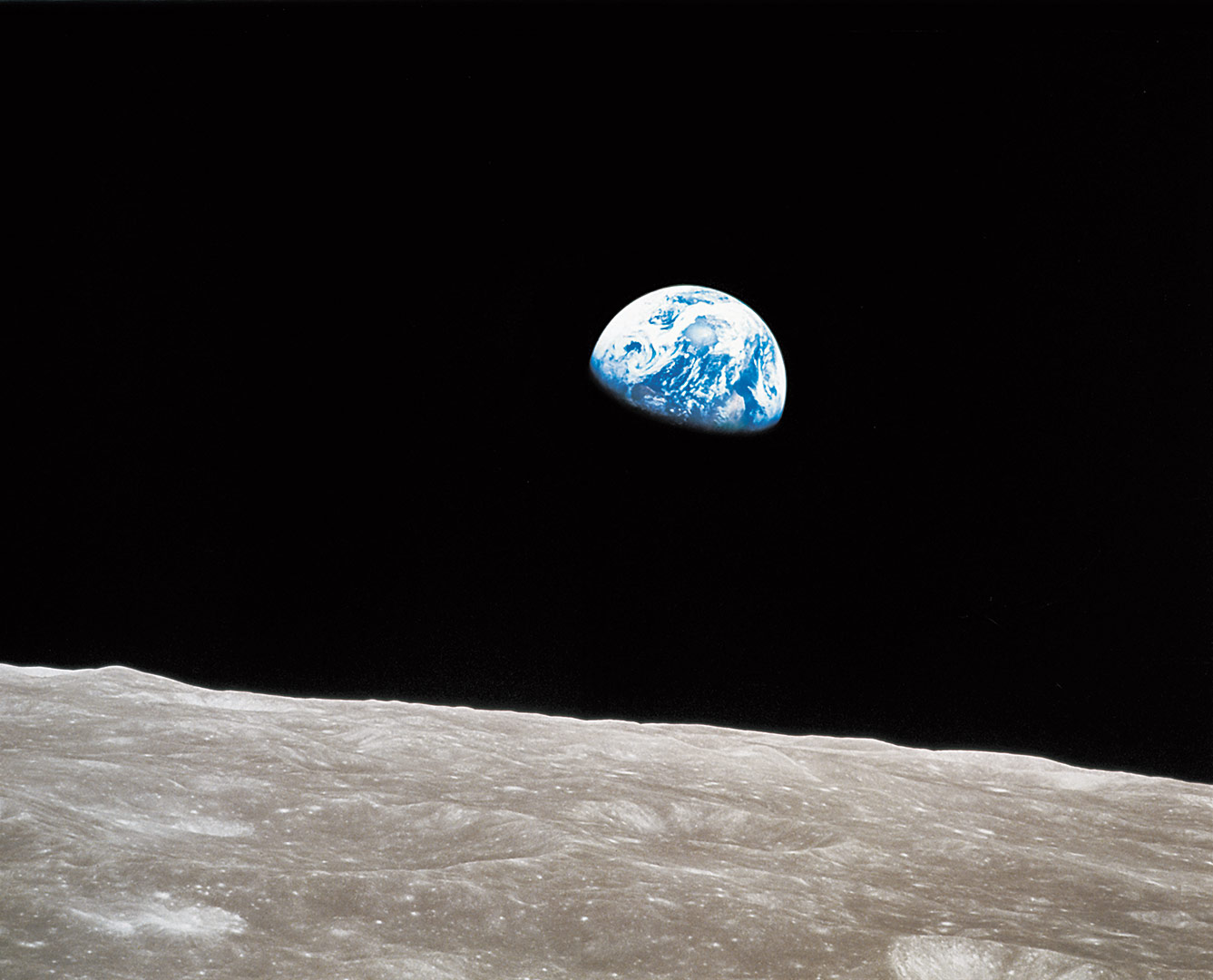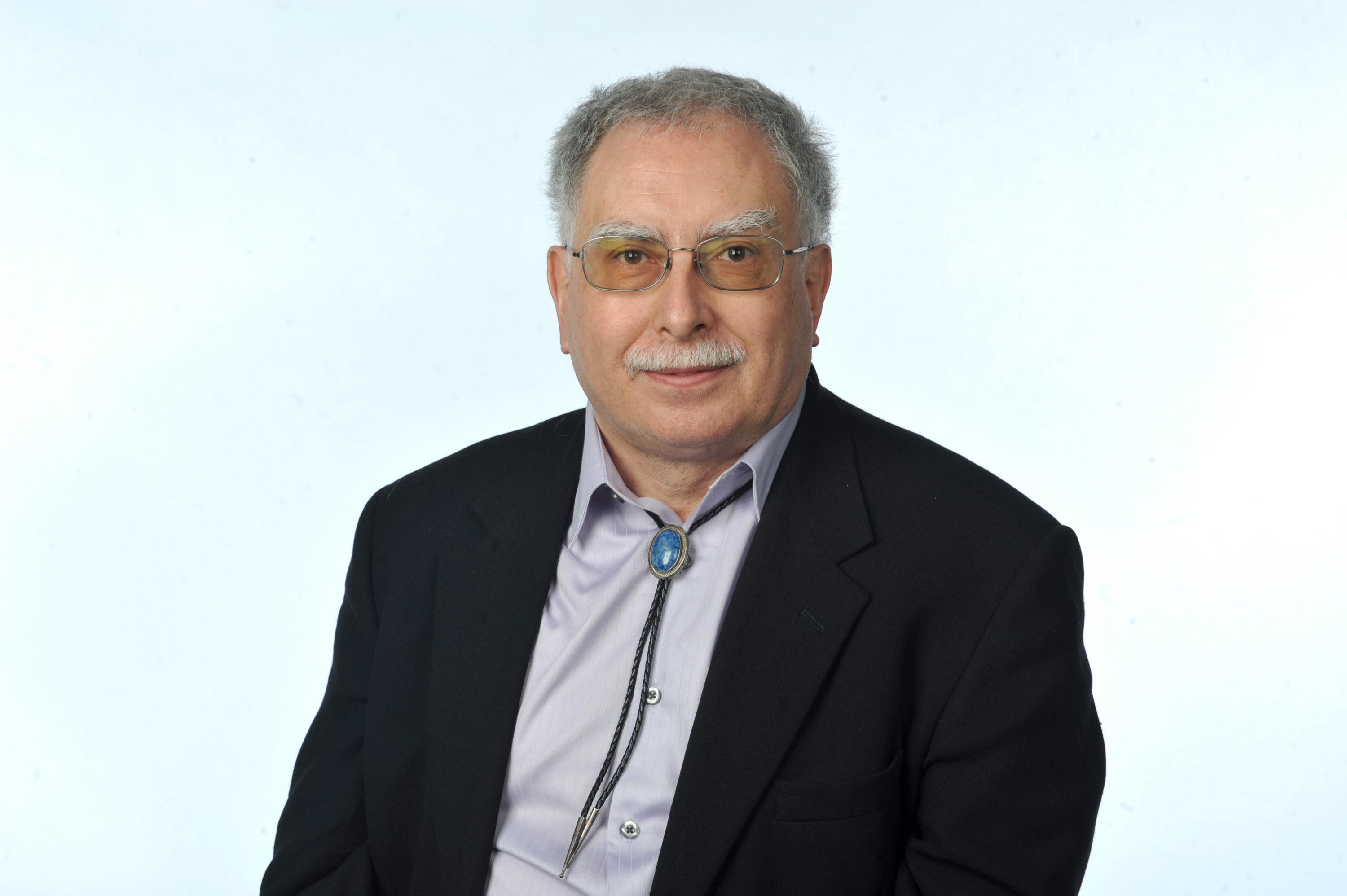For those who were around at the time, it was history forever burned into their memories, with the roar from a rocket as tall as a skyscraper and 11 scratchy-sounding words uttered from the surface of the Moon.
For those people, as well as those born after July 20, 1969, the 50th anniversary of the Apollo 11 Moon landing is a chance to loudly celebrate the advances in science and technology created by the space program.
“The money was well spent, and we should do it again,” says Bob McDonald, a Georgia Tech alumnus who, as a young engineer for a NASA contractor, worked on the engines in that Saturn V rocket that lifted astronauts Neil Armstrong, Buzz Aldrin, and Michael Collins into space on July 16,1969.
Armstrong and Aldrin piloted their lunar lander to the Moon’s surface on July 20, 1969. Later that day, Armstrong became the first man on the Moon. As he stepped off the lander, he told an estimated TV audience of a half-billion, “That’s one small step for man, one giant leap for mankind.”
Those memories will flood back on Saturday, July 20, 50 years to the day since that moment in history. We asked some Georgia Tech College of Sciences researchers – and an alumnus with a special connection to that day – their thoughts on how Apollo 11 and the space program impacted the cause of science and technology in the U.S.
Bob McDonald
He’s 83 years old and enrolled in the Online Master of Science in Analytics program, making him Georgia Tech’s oldest graduate student, according to Georgia Tech Professional Education. This will be his fourth degree from Tech. He already has a B.S. in Chemical Engineering (’57) and a Masters (’61) and Ph.D. (’66) in Nuclear Engineering. McDonald had a unique front-row seat for the Apollo program.
“I was a brand new engineer working for Rocketdyne, who had a contract to manufacture the J2 engines for the Saturn rocket. There were five J2s on the Saturn second stage to get into Earth orbit. A single J2 powered the third stage to the Moon and back.
“The J2 was a new, liquid hydrogen- and liquid oxygen-fueled engine. To prevent the rocket exhaust from melting the engine, liquid hydrogen was pumped through small tubes down to the end of the engine bell, then back up to the combustion chamber for burning. My job was to do the heat transfer and flow calculations for the hydrogen in those tubes to make sure temperatures would be within design limits. This was prior to engine testing when the temperatures could be measured directly. When the engine was tested and performed correctly, my job was finished.
“One interesting thing about the [Apollo] project was that we already knew all the science and math needed for success. We knew where the Moon was, how far we had to travel, how long it would take, and how much energy was required. What we did not have was any of the hardware, the machinery, or equipment necessary to make the trip. Developing, testing, and learning to use the necessary equipment was a job for the engineers. Engineering and science are like one pair of gloves, and both benefitted. At the end of the project the United States was stronger, more prosperous, and wiser than when it began. The money was well spent, and we should do it again.”
"The money was well spent, and we should do it again."
Jennifer Glass
An associate professor in the School of Earth and Atmospheric Sciences, Glass was a NASA Astrobiology Postdoctoral Fellow at the California Institute of Technology from 2011 to 2013. Her research area is biogeochemistry.
“The Moon gives the Earth tides and stabilizes our climate by preventing the planet’s tilt from changing more than a few degrees. But until the Apollo program, we didn’t know exactly how old the Moon was or what it was made of. A major achievement of the Apollo program was reconstruction of the timeline of the Moon's formation. These data came from measurements of the isotopic composition of rock samples that Apollo 11 astronauts collected on the Moon 50 years ago this month. One of these scientists was my academic grandfather (my Ph.D. advisor’s Ph.D. advisor), the late Gerald Wasserburg, who ran a lab at Caltech called the ‘Lunatic Asylum’.
“Perhaps the most important emblem of the Apollo program was the iconic photo of Earth rising over the lunar horizon, captured by Apollo 8 astronaut William Anders. The Earthrise photo profoundly changed human consciousness. That image made people realize how special our own planet is – a pale blue dot against the vastness of space. It ushered in the environmental awareness of the 1970s.”
Rafael de la Llave
A professor in the School of Mathematics, de la Llave researches dynamical systems, including the study of orbits. In 2015, de la Llave and two other scientists received a $100,000 NASA grant to research how math could help make space travel less costly and more efficient.
“When the Moon landing happened, I was a kid in Spain. Like everybody else in the world, I was deeply moved and full of admiration.
"The Moon landing changed the vision we had of our planet and of our species. It was technology impacting on religion and philosophy, not just on everyday life, from GPS, and mobile cameras to wireless technology.
The Moon landing also changed politics; it showed that big democratic and united organizations, where ideas percolate up and down, are more efficient than rigid ones. It was an accomplishment that made the whole world reflect.”
"The Moon landing...showed that democratic and united organizations, where ideas percolate up and down, are more efficient than rigid ones."
John Wise
Wise is the Dunn Family Associate Professor in the Center for Relativistic Astrophysics in the School of Physics. Wise uses supercomputers to create simulations of the Big Bang, along with the birth of stars and the lifespan of black holes.
“The Apollo program accelerated rocket technology and space science for years to come, not only in the U.S. but around the globe. The feats achieved by the whole team inspired a generation of young people into STEM fields, fascinated by the depths of space. The advancements in rockets led to many space telescopes and planetary probes in decades to come.
“The discoveries by NASA telescopes and probes partly motivated me to pursue astrophysics as a career. As an 80's kid, I lingered over pictures of the gas giant planets sent back by the Voyager spacecraft.
“A decade later, the Hubble Space Telescope gave us images of galaxies across the universe. Many other scientists have told me that they had similar formative memories of NASA missions. Without the Apollo program pushing the limits of humankind, these space science missions might have not been possible in the 20th century.”
For More Information Contact
Renay San Miguel
Communications Officer
Georgia Tech College of Sciences
404-894-5209









